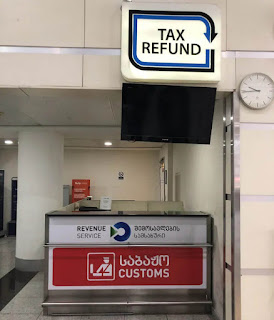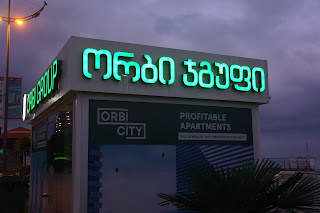Impressions of the Philippines
Impressions of the Philippines including weather and beaches, getting there and around, dangers and annoyances.
Visiting Ajay and Maria, Russian travelivers, draw us to the Philippines. We arrived in Clark, a former US military base, which we found nice and green but as expensive as Botswana. From there we headed to Manila where we enjoyed a typhoon for a few days before continuing to Dumaguete on the island of Negros where our friends currently live.
Päivi had visited the Philippines twelve years ago and many things had changed: the country was now more American, English was widely spoken, and the cities looked less undeveloped. We didn’t have to travel muddy roads cars getting stuck and people having to push nor did we experience excessive power outages (which locals call brown-outs) daily as Päivi had feared.
The Filipino culture has become very American, even to an irritating degree. Tipping is expected and junk food chains are everywhere. The upsides include that almost everybody speaks English and the customer service is rather polite. We were also delighted by the availability of inexpensive oatmeal flakes in the supermarkets.
Weather and Beaches
It was raining a lot, more in Manila, a bit less in Dumaguete. The amount of rain and typhoons depends greatly on the location. The rains were mostly showers except when the typhoon hit Manila. That rain lasted for two days and caused some flooding, though a lot less than the international press photos insinuated. Temperatures were between 25–34 degress Celcius and nights warmer than on Borneo. If you want to have a beach holiday, it’s a good idea to go to some of the major tourist sites like Boracay as the majority of the coast line is not tempting for swimming. The beaches are brown and stony, there is quite a lot of trash in the sea, and probably also jellyfish.
Getting There and Around
There are three major means of public transportation: flying, buses, and jeepneys. Flying is relatively inexpensive, but you will be ripped off with outrageous terminal fees (4–15€ depending whether your flight is domestic or international). On top of that, you will have to pay the regular flight taxes. An honest way would be either charging taxes or terminal fees, not both. If you want to avoid flying, there are inexpensive long-distance buses and jeepneys for short stints. Walking is a bit challenging as there are no sidewalks and some drivers get irritated by pedestrians. Traffic is chaotic even in small cities because of a huge amount of recklessly driving tricycles, kiosks on three wheels.
Dangers and Annoyances
You will see a lot of armed guards with shotguns, pistols, and rifles in front of banks and shopping centres everywhere you go. We haven’t witnessed such paranoia anywhere else. The amount of guns topped even Kenya. Every time you enter a shop, you will be searched and your belongings will be checked. It is most likely that you will be asked to leave your bag in a locker. We have the habit of asking in such situations: “If you don’t trust us, why should we trust you?” In Dumaguete, the most annoying detail in security check was that we were forbidden to take our reusable shopping bag with us. When we refused to accept their polluting plastic bags and carried the stuff in our arms, the guards ran after us thinking we had stolen the goods.
The Spanish influence of the conquistadors can be seen in Catholic religion, afternoon siesta (between noon and 2 PM), and the vocabulary (e.g. cincuenta, cinco, basura, multa). Locals like cockfights which are as disgusting as bull-fights in Spain and zoos in the rest of the world.
If you don’t mind rain and love drinking, smoking, dating Asian girls, eating junk food, and enjoying dirt cheap living costs, the Philippines is your paradise. For us the biggest plus was potable tap water, rare luxury in Asia.







Comments
You've done a good job picking many negative sides of Philippines. I hope you'll manage to see some positive sides, too.
Luin juuri(Hesarin Kuukausiliite 11/2011)
I.Malmbergin kirjoituksen vaeltelustanne puolisonne kanssa.
Kirjoituksessa muun ohessa mainittiin Michel Foucoult ja DISKURSSIANALYYSI.
Diskurssianalyysi?
Halusin tietoa diskurssista, ja niin googlasin sanan. Melkoista hebreaa - merkitys riippuu diskurssista ja kontekstista ja...
Google opasti myös Suolattuihin sakeisiin. Latasin ja koetan nyt tavailla.
Samalla googlasin muitakin tietoja. Kiinnostava oli muinainen opinahjoni Tampereen yhteiskunnallinen korkeakoulu (nyk. yliopisto), mutta parasta kuitenkin oli Tampereen Yhteiskoulu!
Vanha kunnon TYK jo varhain ennen peruskoulua valmensi minutkin elamaan. Siis elamiseen - tai kuinka se diskurssi nyt tassa tapauksessa onkaan.
Muutamatkin Suomen napahenkilot on veivattu lapi samaisen mankelin. Esimerkkina Kimmo Sasi - toinen entisen luokanvalvojani pojista.
TYK viritti semmoisen "sukulaisuuden" tunteen, ett haluan heittaa seuraavan ehdotuksen:
Jos joskus haette bunkan paikkaa Thaimaasta, saattaisin voida hoitaa sohvannurkkaa omakotitalosta - tosin poissa turistitaajamista, riskialttiilta rajaseudulta.
On naet kaynyt niin, etta eras ikaantynyt sukukaismies rakastui paikalliseen nuoreen naiseen. Niinpa on syntynyt suomalaisthaimaalainen perillinen, tytar. Onnellinen isa on rakennuttanut sinne talon. Plus pommisuojan kylalaisile rajakahakoiden varalta.
Suomalaisuus - miten se on milloinkin mielletty, jatkan vaikkarin lukemista.
Onnellista olotilaa teille edelleenkin
toivottaa Jarmo Kantelinen
kantelinenja@gmail.com
We will return there at the latest when their expensive visa system has been abolished, if not earlier.
Happy travels,
Päivi & Santeri